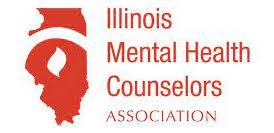Tips for Contacting a Therapist
It takes courage to contact a therapist. Whether it’s your first time seeking therapy, or you’re a seasoned pro, here are some tips to help you find a good therapy connection:
First off, if you are in crisis, call a crisis hotline. You will get immediate assistance. Help IS out there. For example, the National Suicide Hotline (1-800-273-8255) is well versed in how to assist callers, as is the new Suicide and Crisis Lifeline: 988. There are also community “living room” programs designed to help people experiencing mental health crises. These are a possible alternative to psychiatric hospitalization. There are also “warm lines” people can call for non-emergency emotional support. It’s not that therapists can’t help with crises, just that we are better able to help when we have an established relationship with you. After a crisis has peaked, we can help you reflect on what led to the crisis, and try to prevent or lessen the future impact. *See end of article for resources.
Psychology Today has an online therapist finder tool that allows you to filter by insurance, neighborhood, therapy modality and more. (https://www.psychologytoday.com/us/therapists). There are many other more specific therapist directories like the Chicago Black Therapist Directory (https://www.chicagoblacktherapists.com/), the Illinois Find an Art Therapist Directory, (http://www.illinoisarttherapy.org/find-an-art-therapist.html), the Postpartum International Support Provider Directory https://psidirectory.com/and many more.
If the therapist has a website (or is part of a group therapy practice with a site) take some time to read their bio (or watch if there’s video). Try to get a feel for who they are and what they’re about, their relevant work experience, specialties-if important to you, and how they might work with you.
Look up the acronyms if you don’t know what they mean. For example mine are: LCPC (licensed clinical professional counselor), ATR (registered art therapist) and recently added PMH-C (certified in perinatal mental health). Other common titles are: LPC, LSW, LCSW, LMFT, PsyD, and more.
Some therapists specify their preferred method of contact. Most have email contact forms on their websites, or links from sites like Psychology Today and others. Many, myself included, prefer email so as not to interrupt therapy sessions in progress.
When you email, BRIEFLY state the reason(s) you are seeking therapy. Save the very personal details for future contact like a consultation, or intake. Email and text are NOT forms of therapy, while in-person or tele-health sessions are. Your therapist can further explain their policy regarding in-between session contact. Keep in mind that although tele-health sessions have become more common since the Pandemic started (and are certainly covid-safe and convenient), they lack the live in-person energy, as well as the full-body, non-verbal experience that guides deeper human interaction.
State if you have insurance and which one. If possible, do your homework to check if the therapist is in network with your insurance, and what exactly is covered. You can search online provider directories, benefits and coverage, or call the member phone number on the back of the insurance card. Make sure you refer to “behavioral health”. Or, if you plan to pay OOP (out of pocket)/ self-pay, state that, and whether you are in need of a reduced fee payment plan. If you are paying for therapy, you are now entitled to a “Good Faith Estimate” of costs based on the No Surprises Act of 2022. In some instances when a therapist is not in network, you may be able to pay up front, then submit bills to your insurance for out of network reimbursement. This is usually partial coverage, and varies from plan to plan.
Definitely be sure to indicate your preferred schedule, or if you have flexibility. Some therapists have evening and weekend availability, and some, like myself, do not. Some may have openings, wait list, or be full.
Lastly, if you’ve had therapy before, and know what modalities have or haven’t worked for you, include that. Or, if you have an idea of what you want or what you don’t, or have a brief question about therapy, add that.
Studies have shown that “good fit” is more about whether you feel seen and heard than the specific qualifications of a therapist. However, it’s important that your therapist is empathetically tuned in to you, and has the knowledge, training, and humility to work with you. It’s also imperative that you or your therapist look elsewhere if your needs are outside of their abilities or wheelhouse, or if it just doesn’t seem like a good fit on either side. Thanks for reading!
Resources:
https://suicidepreventionlifeline.org/
Dial 988 OR 1-800-273-8255
IL Warm Line (for non-emergency emotional health support) :
866-359-7953
https://ipha.com/content/uploads/Warm%20Line%20Flyer%205.25.16.pdf
Nami provides an excellent resource list here:
https://www.namichicago.org/resources
Living Room Projects:
https://www.renaissancelivingroom.org/
https://www.thresholds.org/programs-services/peer-services/the-living-room
https://namiccns.org/resources/the-living-room-possible-alternative-to-emergency-room-visit/




 www.rainacowanarttherapist.com
www.rainacowanarttherapist.com